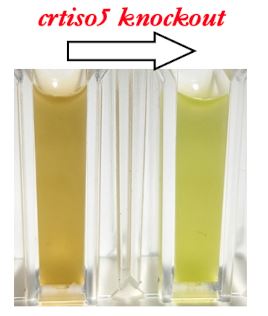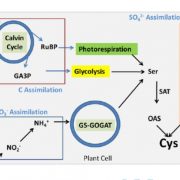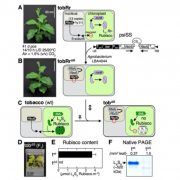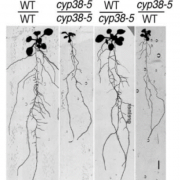The enzyme that makes many algae brown
Cao and Bai et al. reveal a conserved enzyme that makes many algae appear brown as opposed to green typical of land plants.
https://doi.org/10.1093/plcell/koad116
Graham Peers1, Martin Lohr2, Xiaobo Li3,4
1 Department of Biology, Colorado State University; Fort Collins, USA.
2 Institut für Molekulare Physiologie, Johannes Gutenberg-University; Mainz, Germany.
3 Key Laboratory of Growth Regulation and Translational Research of Zhejiang Province, School of Life Sciences, Westlake University; Hangzhou, China.
4 Institute of Biology, Westlake Institute for Advanced Study; Hangzhou, China
Background: Many algae have distinctive coloration compared to plants because of differences in their photosynthetic pigments. Brown colored algae, like diatoms and kelps, contain a carotenoid pigment called fucoxanthin that permits these algae to absorb green light that penetrates deep into the water for photosynthesis. While the structure of fucoxanthin has been known for decades, the biochemical mechanisms by which this ecologically important pigment is synthesized are only now being discovered.
Question: We set out to identify the missing enzymes responsible for the final steps in the biosynthesis of fucoxanthin.
 Findings: We found that a protein predicted to be from a family of carotenoid isomerases (CRTISO5) has gained a completely novel function in the fucoxanthin-containing diatom Phaeodactylum. When this gene is disrupted using clustered regularly interspaced short palindromic repeat (CRISPR)/CRISPR-associated nuclease 9 (Cas9)-mediated genome editing, the normally brown diatom appears green and shows a reduced light-harvesting capability and growth. We used a combination of genetics, enzyme assays and molecular structural analyses to show that CRTISO5 catalyzes the final step of fucoxanthin biosynthesis. Surprisingly, instead of serving as an isomerase, it hydrates a carbon-carbon triple bond within the precursor molecule, leading to formation of the characteristic keto group in fucoxanthin.
Findings: We found that a protein predicted to be from a family of carotenoid isomerases (CRTISO5) has gained a completely novel function in the fucoxanthin-containing diatom Phaeodactylum. When this gene is disrupted using clustered regularly interspaced short palindromic repeat (CRISPR)/CRISPR-associated nuclease 9 (Cas9)-mediated genome editing, the normally brown diatom appears green and shows a reduced light-harvesting capability and growth. We used a combination of genetics, enzyme assays and molecular structural analyses to show that CRTISO5 catalyzes the final step of fucoxanthin biosynthesis. Surprisingly, instead of serving as an isomerase, it hydrates a carbon-carbon triple bond within the precursor molecule, leading to formation of the characteristic keto group in fucoxanthin.
Next steps: Algae contain a wide variety of photosynthetic pigments that are not found in plants. Our results show that algae repeatedly repurposed pigment biosynthesis genes for novel functions and that these gene families are ripe for exploration.
Reference:
Tianjun Cao, Yu Bai, Paul Buschbeck, Qiaozhu Tan, Michael B. Cantrell, Yinjuan Chen, Yanyou Jiang, Run-Zhou Liu, Nana K. Ries, Xiaohuo Shi, Yan Sun, Maxwell A. Ware, Fenghua Yang, Huan Zhang, Jichang Han, Lihan Zhang, Jing Huang, Martin Lohr, Graham Peers, Xiaobo Li. (2023). An unexpected hydratase synthesizes the green light-absorbing pigment fucoxanthin. https://doi.org/10.1093/plcell/koad116







